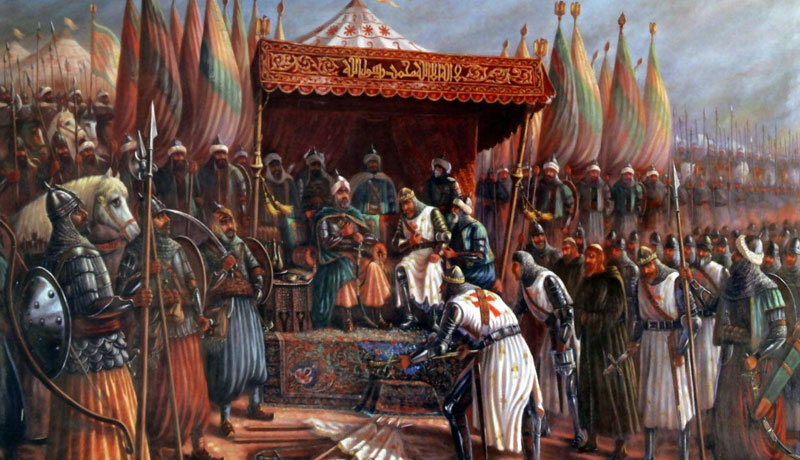Friday February 23
The First Crusade
keynote address Living And Learning In The Holy Land After The First Crusade
The First Crusade (1096-99) resulted from the combination of two centuries’ worth of political, economic, and religious transformations in Western Europe and the Middle East. Geoffrey Koziol (UC Berkeley) will discuss these transformations and will introduce us to the writings of a cleric from Jerusalem who wrote a chronicle of the First Crusade and kept writing it for the next 20 years as he lived in the Holy land and saw it begin to fray.
lecture The Medieval Epic And The First Crusade
The chanson de geste were immensely popular epic poems and part of the lyric poetry, all orally transmitted, that existed at the start of the First Crusade. Joseph J. Duggan (UC Berkeley) will explain how one of the most prominent of these, the Song of Roland, helped to inform the images of the Saracens in the mind of the French knights.
Selected Other Crusades
Saturday February 24, 2007
lecture Reconquest And Crusade In Iberia (1085 To 1521)
The relationship between the Reconquest (or conquest) by the Spanish Christian kingdoms of lands held by Islam in the Iberian peninsula and how that changed the nature of the relations of the three religions living there will be explored by Teofilo Ruiz (UCLA).
lecture From Contact To Coexistence: Art And The Crusades, (1130-1374)
Justine Marie Andrews(University of New Mexico) will enlighten us on the images which are now called Crusader Art, how they developed and became part of the fusion that went into the building of impressive cathedrals and icons built after the fall of Constantinople in 1204 and which continued even after the fall of Acre in 1291.
performance
Tim Rayborn a Bay Area native and early music performer with an international reputation will play and sing some pieces of the Troubadours that were so much a part of their medieval communities, the crusades , and courtly life from 1100 to 1300.
lecture Crusade Encounters: Medieval And Modern
The Muslim-Christian contact and confrontation in the Holy Land and the afterlife of the crusading ideal and its consequences for later and contemporary discourses on relations between Islam and the West will be presented by Adnan Husain (Queens University Kingston Ontario Canada).
panel discussion
Discussion and questions led by moderator James D. Ryan
Presenters
Justine Andrews, Art History, U New Mexico
Joseph Duggan, French, UC Berkeley
Adnan Husain, Medieval Mediterranean History, Queen’s U Ontario
Geoffrey Koziol, History, UC Berkeley
Tim Rayborn, musician
Teofilo Ruiz, History, UCLA
James Ryan, History, CUNY

